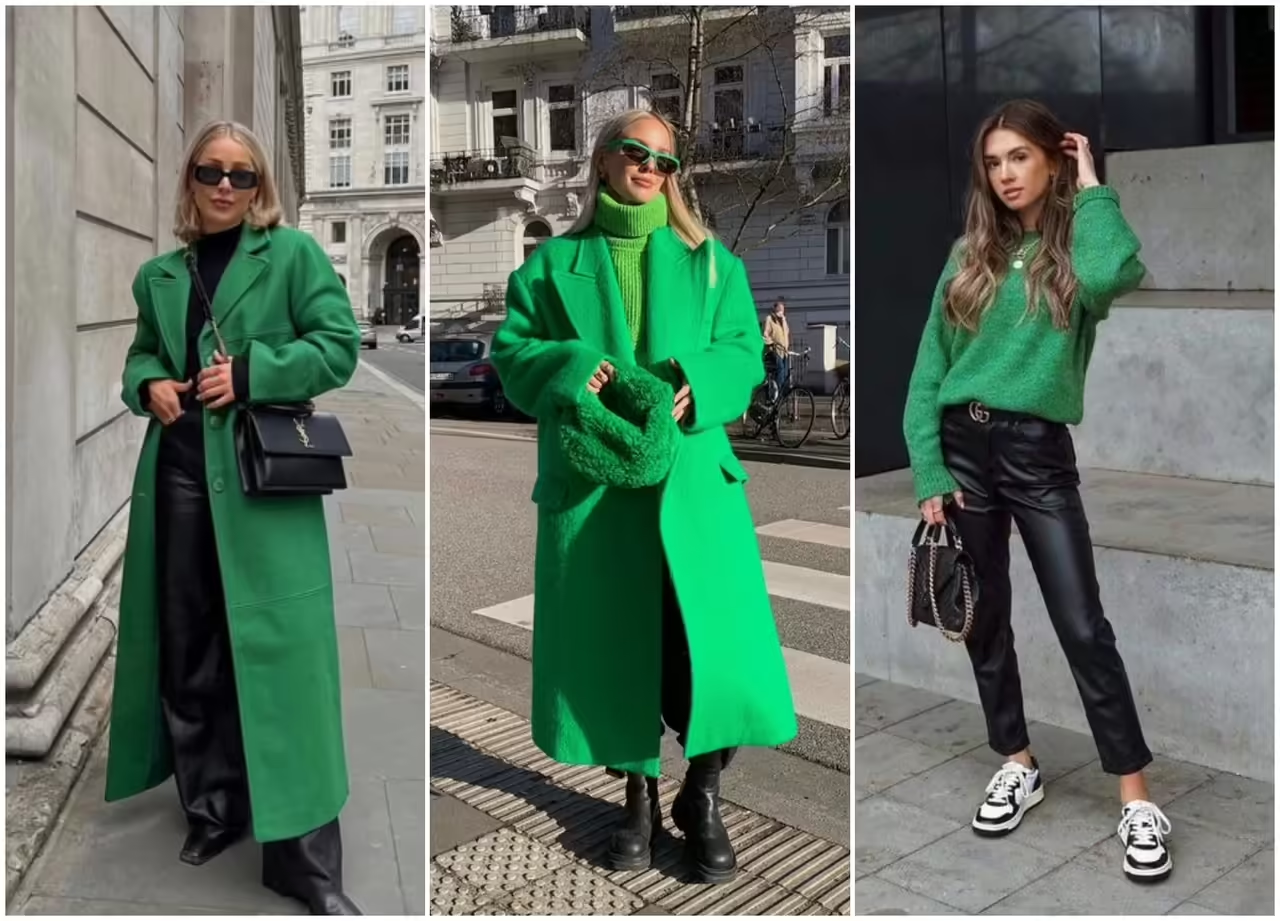
In the vast spectrum of colors that paint our world, green stands out as a hue that goes beyond its visual appeal. More than just a color, green is a multifaceted entity that holds symbolic, psychological, and cultural significance. In this exploration, we delve into the diverse dimensions of green, transcending its chromatic existence.
The Aesthetics of Green: Nature’s Palette
Green finds its genesis in the lush landscapes of nature, a chromatic masterpiece crafted by the flora that blankets our planet. From the vibrant emerald of leaves to the muted olive of evergreen trees, the aesthetics of green speak a language of tranquility and growth. It is the color of life, symbolizing renewal and rejuvenation in the ever-revolving cycle of nature.
Psychology of Green: Calm in Chroma
The human psyche shares an intricate relationship with color, and green, in particular, has a profound impact on our emotions. Associated with calmness and serenity, green has therapeutic qualities that evoke a sense of balance and harmony. Understanding the psychology behind this color unveils its ability to soothe the mind and create spaces of tranquility.
Cultural Tapestry: Green as a Symbol of Peace
Across cultures and civilizations, green has woven itself into the fabric of symbolic representation. It is often synonymous with peace and prosperity, a color that transcends linguistic barriers to convey a universal message of hope and unity. From the lush fields of Ireland to the symbolic olive branches in ancient Greece, green has been a herald of peace throughout history.
Green in Art: A Visual Symphony of Serenity
Artists have long been captivated by the allure of green, using it to convey emotions and tell stories on canvas. The works of Monet, with his serene water lilies, and Van Gogh, in his vibrant landscapes, showcase the diverse ways green can be harnessed to evoke a sense of tranquility. Green, in the hands of artists, becomes a visual symphony that resonates with the human soul.
Environmental Impact: Green as a Call to Conservation
As our awareness of environmental issues grows, green takes on an additional role as a symbol of ecological consciousness. The “green” movement emphasizes sustainability, encouraging us to preserve the verdant landscapes that not only please the eye but sustain life on Earth. Green becomes a call to action, urging us to protect and nurture the environment.
The Psychology of Green: Tranquility in Hues
In the intricate tapestry of colors that shape our perceptions, green emerges as a powerful player, weaving a narrative deeply rooted in the psychology of human emotions. Beyond its visual appeal, green has a remarkable ability to influence our state of mind, offering a spectrum of tranquility that resonates across various aspects of our lives.
The Calming Chromatics: Understanding the Impact
Green’s association with calmness is not a mere coincidence; it is deeply ingrained in the way our brains perceive and interpret colors. Psychologically, green is often linked to balance, harmony, and stability. This chromatic serenity has the power to alleviate stress, reduce anxiety, and create an overall sense of well-being.
Biophilic Connection: Green and Nature’s Influence
At the core of the psychological impact of green is its connection to nature. As a color abundantly present in the natural world, green triggers a biophilic response—a deep-seated affinity humans have for nature. The presence of green spaces, whether in urban environments or natural landscapes, has been proven to enhance mental health, foster creativity, and promote a sense of calm.
Healing Spaces: Green in Healthcare Environments
Hospitals and healthcare facilities strategically incorporate green elements into their design, recognizing the psychological benefits it offers to patients and caregivers. From soft sage walls to indoor plants, the use of green in healthcare spaces aims to create environments that promote healing, reduce stress, and contribute to a more positive patient experience.
Workplace Wellness: Green for Productivity
In the corporate world, where stress and pressure often prevail, the introduction of green elements can significantly impact employee well-being. Greenery in office spaces has been linked to increased productivity, enhanced focus, and a reduction in workplace stress. The psychology of green extends its influence to foster a more positive and productive work environment.
Color Therapy: Harnessing Green’s Therapeutic Potential
Color therapists leverage the psychological effects of green to promote mental and emotional balance. Whether through visualizing green landscapes or incorporating green objects into daily life, color therapy recognizes the power of green to soothe the mind, inspire creativity, and bring a sense of tranquility to individuals seeking therapeutic interventions.
Cultural Perspectives: Diverse Meanings of Green
The psychological impact of green varies across cultures, adding an intriguing layer to its significance. While it may symbolize growth and renewal in one culture, it could represent luck or fertility in another. Exploring these cultural nuances enhances our understanding of how the psychology of green is shaped by diverse perspectives and interpretations.
History and Symbolism of Green Throughout Time
Green, the color that evokes images of nature’s bounty, has a rich and diverse history that spans across cultures and epochs. From ancient civilizations to modern societies, the significance of green has evolved, weaving a tapestry of meanings that go beyond its chromatic expression.
Ancient Roots: Green in Mythology and Rituals
In the annals of ancient civilizations, green held a mystical allure. In Egyptian mythology, the god Osiris, symbolizing resurrection and fertility, was often depicted with a green face. In Mesopotamia, greenery symbolized the fertile crescent, a testament to the agricultural abundance of the region. Rituals and ceremonies often incorporated green elements to invoke prosperity and growth.
The Verdant Middle Ages: Symbol of Hope and Renewal
During the Middle Ages, green took on a dual role. On one hand, it symbolized fertility and the renewal of life, echoing its associations with nature. On the other hand, green was also associated with the devil in medieval Christian art, highlighting its complex and sometimes contradictory symbolism.
Renaissance Revival: Green in Art and Fashion
The Renaissance witnessed a revival of interest in nature and classical ideas, leading to a renewed appreciation for the color green. Artists such as Botticelli and Titian utilized green pigments in their masterpieces, capturing the lush landscapes and symbolic richness of the color. Green, during this period, also became a fashionable choice, adorning the garments of the elite.
Green in Eastern Cultures: Symbol of Balance and Harmony
In Eastern cultures, particularly in China and Japan, green has been imbued with profound symbolism. Representing harmony, balance, and the cyclical nature of life, green is often associated with spring—a season of renewal and growth. Traditional Chinese medicine recognizes the balancing properties of green, linking it to the well-being of the body and mind.
The Romantic Era: Green as a Symbol of Emotion
In the Romantic era, green gained prominence as a symbol of emotion and sensibility. Poets and writers used green to evoke feelings of nostalgia, longing, and the transcendental connection to nature. It became a symbol of the sublime, representing the untamed and awe-inspiring aspects of the natural world.
Modern Symbolism: Green as a Color of Progress and Ecology
As societies entered the modern era, green took on new meanings. It became a symbol of progress and innovation, with the “green revolution” signifying advancements in agriculture. In the 20th century, green also became associated with environmental movements, symbolizing a commitment to ecological sustainability and a call to preserve the planet.
Fashion and Style: Elegance and Serenity in Green
In the world of fashion, where trends come and go, the color green stands as a timeless symbol of elegance and serenity. From haute couture to street style, the various shades of green have graced runways and wardrobes, bringing a touch of sophistication and tranquility to the realm of attire.
Emerald Runways: The Regal Elegance of Green
Emerald, with its deep and luxurious hue, has long been associated with regal elegance. Fashion designers have embraced this shade to create garments that exude opulence and refinement. From evening gowns to tailored suits, emerald green commands attention, conveying a sense of grace and sophistication that transcends passing trends.
Mossy Neutrals: Subtle Serenity in Everyday Attire
For those seeking tranquility in their day-to-day style, mossy greens offer a subtle yet impactful choice. These earthy tones evoke a sense of calm reminiscent of nature’s landscapes. Whether in casual wear or professional ensembles, mossy greens bring a touch of serenity to everyday fashion, allowing individuals to express their style with understated elegance.
Botanical Inspirations: Floral Patterns and Green Serenity
Floral patterns, often featuring various shades of green, have become a perennial symbol of serenity in fashion. Dresses adorned with delicate leaves and blossoms infuse an outfit with a natural grace, creating a harmonious blend of elegance and tranquility. These botanical inspirations connect fashion with the calming allure of nature.
Green Accessories: Accentuating Style with Serene Details
In the realm of accessories, green takes on the role of an accentuating force. Whether it’s a verdant handbag, emerald earrings, or a pair of moss-toned shoes, green accessories have the power to elevate an outfit, adding a touch of serenity without overpowering the overall aesthetic. These subtle details bring a sense of balance to the style equation.
Sustainable Chic: Green Fashion for a Tranquil Planet
As sustainability becomes a focal point in the fashion industry, green takes on a dual role, symbolizing both style and eco-consciousness. Ethical and sustainable fashion practices often embrace the color green as a representation of environmental awareness. From recycled fabrics to eco-friendly dyes, fashion that prioritizes the planet incorporates green as a symbol of both elegance and responsibility.
Cultural Significance: Green Attire in Traditions and Celebrations
Across cultures, green attire holds cultural significance. In many societies, it symbolizes luck, fertility, and new beginnings. From traditional garments to contemporary celebrations, the inclusion of green in fashion becomes a nod to cultural heritage, infusing elegance with deeper layers of meaning.







